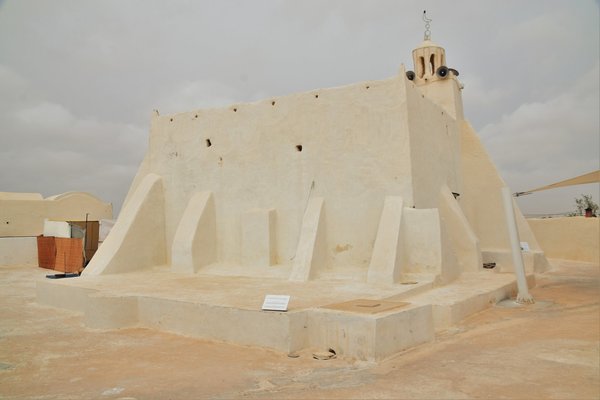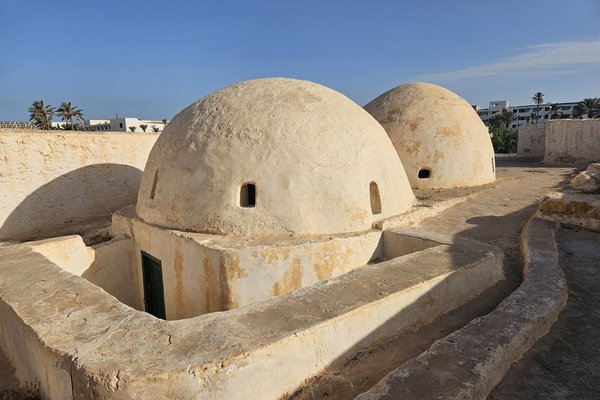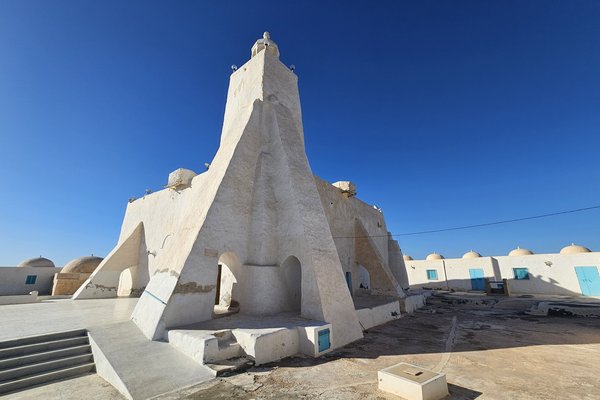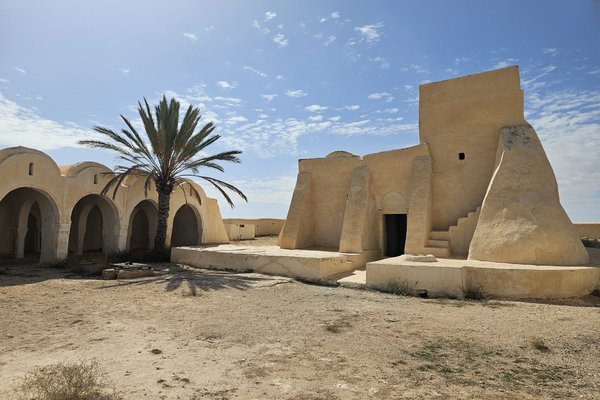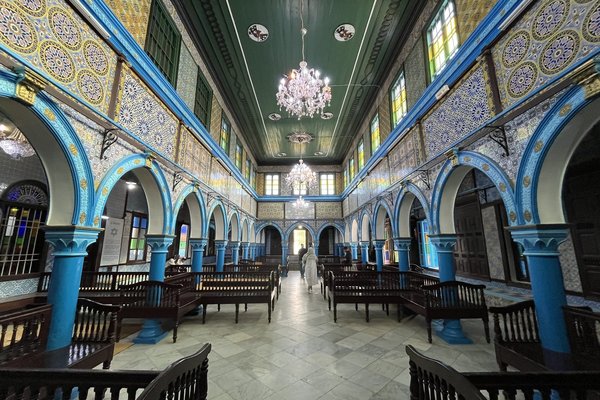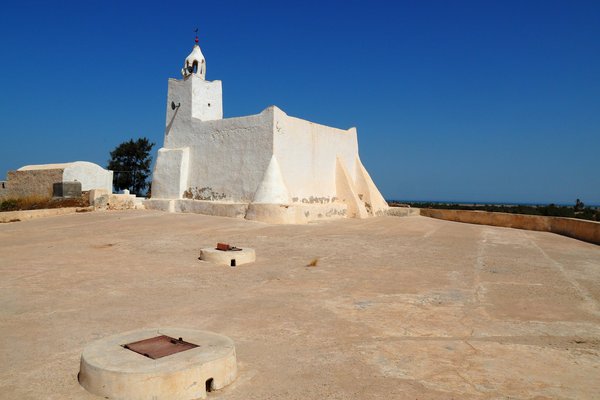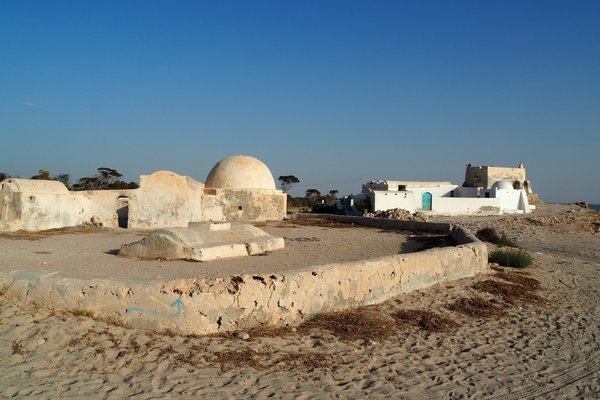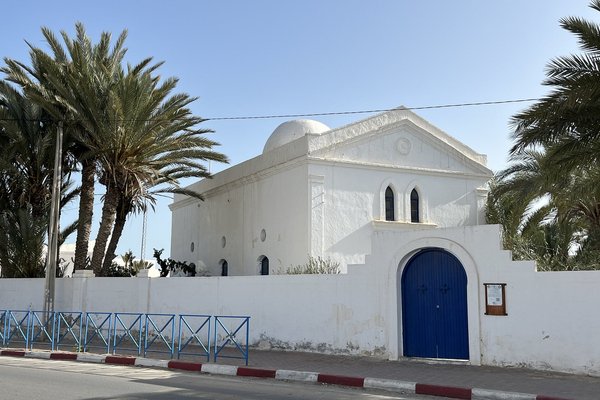Tunisia
Djerba
Djerba: Testimony to a settlement pattern in an island territory reflects how the local communities adapted to life in a water-scarce environment.
Between the 9th and the 18th century, the island was divided into small, clustered neighbourhoods called houma that were self-sufficient. The main centre for trade on the island was Houmt-Souk, and there were two urban residential neighbourhoods for Jewish communities (Hara Sghira and Hara Kbira). Notable remains among the 31 locations include the Ghriba synagogue, the church of St. Nicolas and many mosques.
Community Perspective: reviews of Djerba have not been flattering so far; most pre-date the final inscription which, although more focused than the "crappy traces of archeology" of the Tentative Site, still is hard to enjoy due to its lack of interpretation.
Site Info
Official Information
- Full Name
- Djerba: Testimony to a settlement pattern in an island territory (ID: 1640)
- Country
- Tunisia
- Status
-
Inscribed 2023
Site history
History of Djerba
- 2023: Advisory Body overruled
- ICOMOS advised Referral, as what is left is too fragmented to constitute a cultural landscape. Not all components are protected by legislation. No integrated management system for the series.
- 2023: Inscribed
- Inscribed
- 2021: Incomplete - not examined
- Type
- Cultural
- Criteria
- v
Links
- UNESCO
- whc.unesco.org
- Related
-
- djerba.holiday — Mosquées et Monuments Historiques de Djerba
All Links
UNESCO.org
- whc.unesco.org — whc.unesco.org/
Related Resources
- djerba.holiday — Mosquées et Monuments Historiques de Djerba
Community Information
- Community Category
- Urban landscape: Arabic and Middle Eastern
Travel Information
Recent Connections
-
Incorrect UNESCO 'Number of locations'
It was nominated as a serial site with … -
Star Wars
Imghar Mosque features in the film Epis… -
Homeric Locations
Djerba is speculated to have been the i…
Connections of Djerba
- History
-
-
Homeric Locations
Djerba is speculated to have been the island of the lotus-eaters where Odysseus was stranded on his voyage through the Mediterranean Sea. (wiki) -
Normans
"Djerba was controlled by the Norman Kingdom of Sicily for a period of time in the 12th and the 13th century CE," (AB ev)
-
- Architecture
-
-
Medina
"residential neighbourhoods for Jewish communities (Hara Sghira and Hara Kbira); the latter echoed the typical dense and compact medinas of the cities of the Maghreb." (AB ev)
-
- Damaged
-
-
Terrorist Attacks
El Ghriba Synagogue has been attacked several times (1985, 2002, 2023). The deadliest was executed by Al Qaeda on April 11, 2002: "a truck full of explosives was detonated close to the synagogue, killing 21 people, among whom were 14 German tourists, five Tunisians, and two French nationals"See en.wikipedia.org
-
- World Heritage Process
-
-
Incorrect UNESCO 'Number of locations'
It was nominated as a serial site with 31 components; the UNESCO website currently shows 30 components, and Tunisia's 2024 SOC report had 32. A “Zone Côtière inhabitée” was added in the northwest, while Khazroun / Sedghiene / Guecheine are seen as one by UNESCO, where they are separate elsewhere. -
Cultural landscape not recognized
ICOMOS: "the nature of the property as a testimony to a settlement pattern that structured the island rather than a cultural landscape" -
Inscribed on a single criterion only
Crit v
-
- Religion and Belief
-
-
Christian Churches in non Christian countries
Saint-Nicolas Church -
Jewish religion and culture
Includes "the vestiges of Hara Sghira, a Jewish residential neighbourhood dating back to the 10th century CE, and includes remains of a Jewish school, cemeteries, and a number of synagogues", as well as the Synagogue El Ghriba. -
Greek Orthodox churches outside Greece
Saint-Nicolas Church -
Notable mosques
Includes 22 mosques, "served as places of worship and epicentres of community life, Koranic schools, or cultural and civic centres. Those erected along the coast played a defensive role forming together lines of surveillance. Others functioned as places of resistance and refuge. The oldest mosques included in this serial nomination date back to the 9th (as component part M11) and 10th centuries CE" (AB ev)
-
- Human Activity
-
-
Irrigation and drainage
"Hydraulic installations within the menzel included a well, a water basin connected to irrigation canals and tanks for collecting rainwater" (AB ev) -
Olive Tree Landscapes
"The settlement pattern of Djerba based on a menzel as a habitation unit was organised around diversification and complementarity of activities centred on agricultural production – with irrigated agriculture being practised inside the menzel and dry farming outside it, in the green zones called ghaba where olives, grains and legumes were grown next to orchards" (AB ev) -
Palm Groves
"Wild palm trees grew along the coast (fraoua zones), while the date palms were cultivated within menzels for food, construction materials and crafts." (AB ev)
-
- Constructions
-
-
Caravanserai
Houmt-Souk: "vaulted bazaar Souk Erbaa, .., around which developed multiple caravanserai-type lodging establishments (fondouk) for traders and their merchandise." (AB ev) -
Bazaars and Market Halls
Houmt-Souk: "vaulted bazaar Souk Erbaa, dating from about the 16th or 17th century CE" (AB ev)
-
- Timeline
-
-
Built in the 9th century
"bears testimony to a settlement pattern that evolved on this Tunisian island between the 9th and 18th century CE" (AB ev)
-
- WHS Names
-
-
Name changes
From "Djerba: cultural landscape, testimony to a settlement pattern in an island territory" to "Djerba: testimony to a settlement pattern in an island territory" at inscription
-
- Literature & Film
-
-
Star Wars
Imghar Mosque features in the film Episode IV — A New Hope (1977)See galaxytours.com
-
News
No news.
Recent Visitors
Visitors of Djerba
- alex
- Alexander Lehmann
- Ali Zingstra
- Ana
- Artur Anuszewski
- Atila Ege
- Aunti
- BaziFettehenne
- Bram de Bruin
- Caspar
- Daniel Chazad
- Daniel Gabi
- David Marton
- del
- Dimitar Krastev
- Els Slots
- Erfe91
- Fan Yibo
- Fmaiolo@yahoo.com
- George Gdanski
- GeorgeIng61
- H Beswick
- henryjiao18
- Joel on the Road
- Karito Vies
- Kasper
- Kbecq
- Kerékgyártó
- La Concy
- Lindaflat
- Loic Pedras
- marc Rouserez
- Morodhi
- Nihal Ege
- Paul Schofield
- Philipp Leu
- Philipp Peterer
- Randi Thomsen
- Roger Ourset
- Roman Bruehwiler
- Sergio Arjona
- Shandos Cleaver
- Solivagant
- Stanislaw Warwas
- Sutul
- Svein Elias
- Szucs Tamas
- Tamara Ratz
- Tarquinio_Superbo
- Thomas Buechler
- Viaje al Patrimonio
- WalGra
- Westwards
- Wojciech Fedoruk
- YaroMir
- Zach
- ZCTLife
- Zoë Sheng
Community Reviews
Show full reviews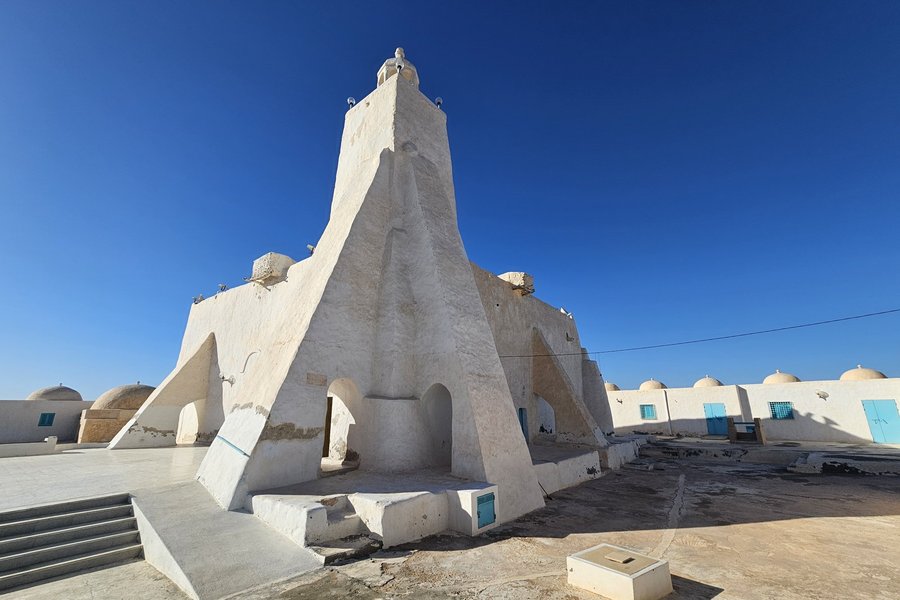
During our 5 nights resort holidays on Djerba, I managed to visit most of the components spread over several mornings. The WHS can roughly be divided into mosques and agricultural zones. Plus, a church, a synagogue and 2 town centres. Mosques clearly make the biggest part, and it was fun to hunt them down. It required a fair amount of dirt and sand road driving to tick them all. Many mosques are still in use and thus closed for visitors, but from those I saw the interior through the windows I can confidently say, that you don’t miss out on anything for not entering them. Other mosques are no longer in use, and you can freely enter all rooms of these complexes.
What is quite special about this site is that, even though looking at the map it feels like the whole island is inscribed, it’s actually easy to miss. Even the reviews of those who visited before inscription show that. Not counting the mosques you probably drive by but would not notice as WHS material, your best chance to enter the core zone is probably visiting the old part of Houmt Souk for shopping. None of the component are that remarkable, that you would have visited anyway.
Do you need to visit that many components? Certainly not. But I can’t just sit an entire day by the pool, so here we are. For those who are as dedicated as I am, here’s an overview of my visits:
Sidi Ismail
…
Keep reading 2 comments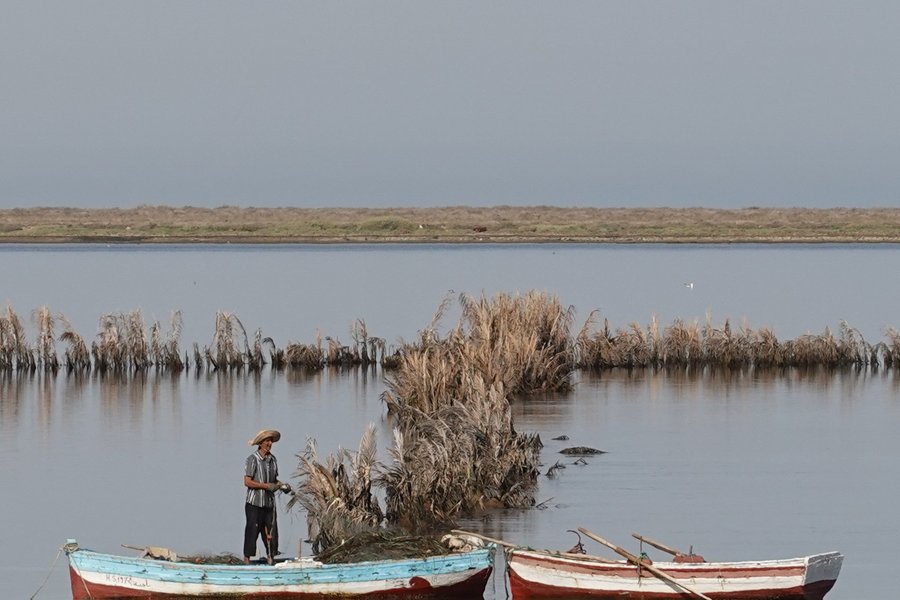
This is a complex WHS site with multiple listed locations. The dispersed spatial organization characteristic of human occupation on the island since the 9th century is difficult to grasp. Moreover, it made motorized travel and orientation difficult.
Before going there, I had no idea how the land ownership (called Menzel) is organized, nor how the different communities live together on the island, which gave the visit a kind of uncomfortable feeling of secrecy that I believe the other writer members of the WHST community shared.
But, let's stay positive and seize the beauty of the moment to visit some of the island's archetypal monuments, which are as follows:
- Coastal mosques: the Sidi Yeti Mosque and the Sidi Jmour Mosque.2. Inland mosques: the Moghzel Mosque and the Bou Messouer Mosque.3. An underground mosque: Louta de Sedwikech.4. The Ghriba Synagogue.I visited also the Guellala Museum.
And then I took a photo of a water well, formerly an essential element of life on the island, when I could do it, and of an agricultural landscape characteristic of the island. It was all crowned with a stroke of luck with a traditional fishing scene, the zribas, which is a fixed method of fishing carried out using submerged fences made of palm leaves (the introductory photo). Another element of the intangible site "Knowledge, know-how, traditions and practices associated with the date palm" to note in my notebook!
From the first visit to the Sidi Yeti mosque, I was informed about the …
Keep reading 0 comments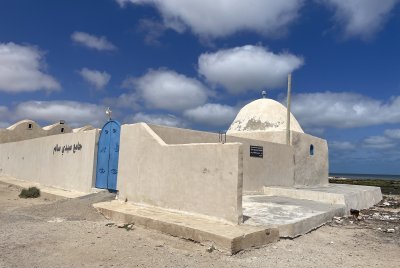
Djerba is a cultural landscape that reflects how local people survived and thrived on a harsh desert island. The dossier and the inscription criteria speak of overcoming the unique challenges in finding food and water, building shelters, developing an economy, defending themselves, and so on. This sounds interesting enough, though a bit vague like most cultural landscapes.
However, almost none of the inscribed locations reflect these criteria. Of the 31 locations specifically mentioned, 25 are mosques, along with a catholic church, a synagogue, and a souk. Which honestly makes this inscription baffling.
For our visit, we stayed in Houmt Souk at the north-western edge of the island. We visited the souk (naturally), the central church, and the Sidi Salem mosque just west of the town. For each of these, there isn’t really much to see. The church is only open two hours a week on Thursdays, so unless your timing is perfect you can only see the outside. The Sidi Salem mosque is only open in the afternoons, and from the outside there’s basically nothing to see anyway as it’s just a little walled compound with a dome (see photo). It reminded me of the fortified churches site in Romania, but otherwise unremarkable.
The souk is very small and inauthentic compared to those found other medinas, and since Djerba is very much a tourist town the stalls are mostly selling fridge magnets and counterfeit football jerseys. Although not mentioned in the dossier, there are a few caravanserais …
Keep reading 0 comments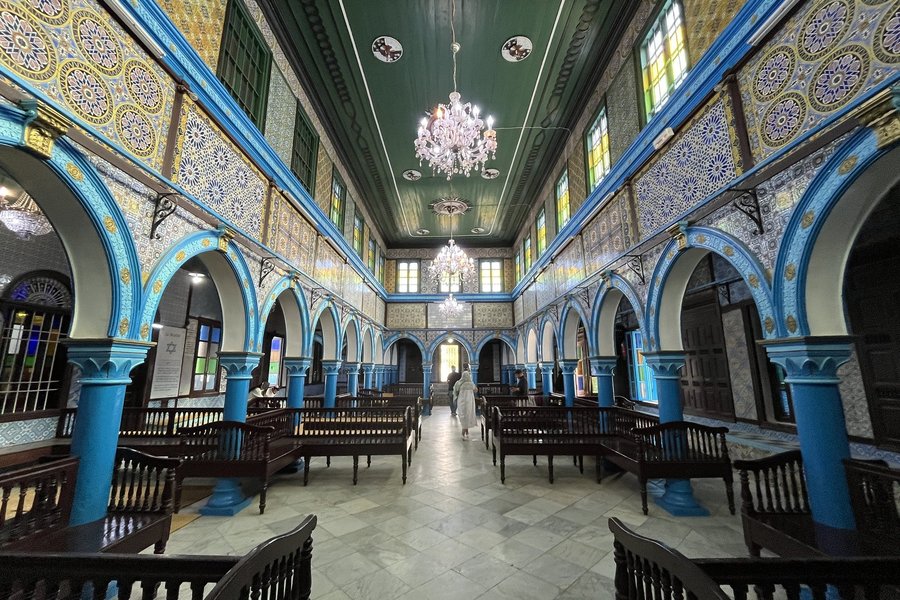
This is the first review of a visit to the Djerba WHS after its inscription. The site has received horrible reviews and an exceptionally low rating from our community, but I thought maybe it would all make more sense with the help of an OUV-frame. It’s about a dispersed but homogenous settlement and land-use pattern, characterized for example (but not limited to) self-sufficient rural communities with their own water supply, palm groves and tiny mosques. That’s why it includes 22 rather featureless and abandoned neighbourhood mosques.
For my visit, I tried to make a representative pick from the locations without having to rent a car. In the morning, I visited 4 components in and north of the capital city Houmt Souk. The medina of Houmt Souk is not a rural settlement, of course, but the trade town where everything ended up. Included is just a small zone (the old funduqs, the covered market, the Mosque of the Turks and St. Joseph Church; but not Borj El Ghazi Mustapha). It feels like a smaller version of the Medina of Tunis, and even in the early morning, it is all geared up to receive the French and German beach tourists. I then walked on to another component, the Church of St. Nicholas. A sign on the door says that it only opens on Thursdays from 10-13. The sizeable church (upper photo) can only be seen from the sidewalk across the street.
My next goal was the Mosque of Sidi Smain (lower …
Keep reading 0 comments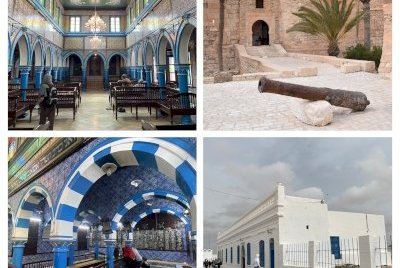
On our Tunisia journey this April, we visited the island of Djerba. Visiting all the country’s WHS’ we wanted to add on a visit the only site which will supposedly be forwarded (next year). Not knowing too much about the island upfront thus we decided to stay a day (and two nights) to explore it. Even though the island is far from small the mentioned elements in the site description are limited, so with all due respect to the island’s nature, history, culture and trade traditions, there is not much to see!
The nature - is semi-desert like impression all over, except for then inhabited areas. Sandy and rocky, some scattered palms and some slightly cultivated fields. The description says it’s a “dispersed habitat illustrating a great capacity of adaptation”, but we failed to see the beauty or the uniqueness.
The history - is more interesting, but the tangible part is limited.
The culture - is albeit more visual. There are heritage museums showing off the lifestyle and clothing and their way of managing daily life.
The trade traditions - is also partly “documented” through the heritage museums and some of the buildings.
The collection of scattered elements is meant to represent the heritage and we spent our time visiting a collection of them. We used a handy app called “Djerba Guide“.
The most interesting element was the venerable synagogue of Ghriba from the 19th century. The exterior is decent, not flashy. The …
Keep reading 0 comments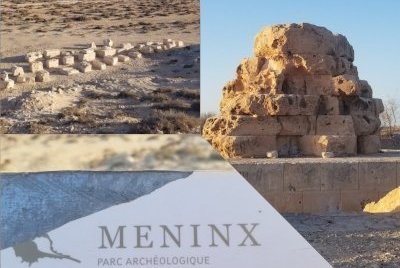
Update Sep 2023: This was actually inscribed even though it wasn't recommended to be, but naturally the process these days is so chilled that pretty much anything is inscribed as World Heritage. Anyhow, the main reason for my update is that the sites I posted about were not included even though I thought Meninx would have something if expanded on and what a surprise that the weird "rock" wasn't inscribed. Instead they only inscribed mosques, mosques, and more mosques. Now before you get a fitty about me being anti-Muslim or something that's not my rant here at all: they are just so-so old mosques and aren't worth to be WH. The state party basically just spun this into "many people lived her over many years as you can see by religious devoted", well, that's not special and many places in the world have old, better, and more valuable mosques (or other cultural buildings). So, big thumbs down but whatcha gonna do - don't expect anything special on your day tour around Djerba and enjoy the beach resorts instead! Previous review for the tentative site is below.
====
Absolutely horrible. Djerba is great for beach resorts but trying to include the crappy traces of archeology around is just pathetic. I would give it half a star. That "thing" in the top right corner is actually a site! The Meninx remains may be sort of interesting but you only see these symmetrically placed rocks... Seriously?! If you are on Djerba …
Keep reading 0 comments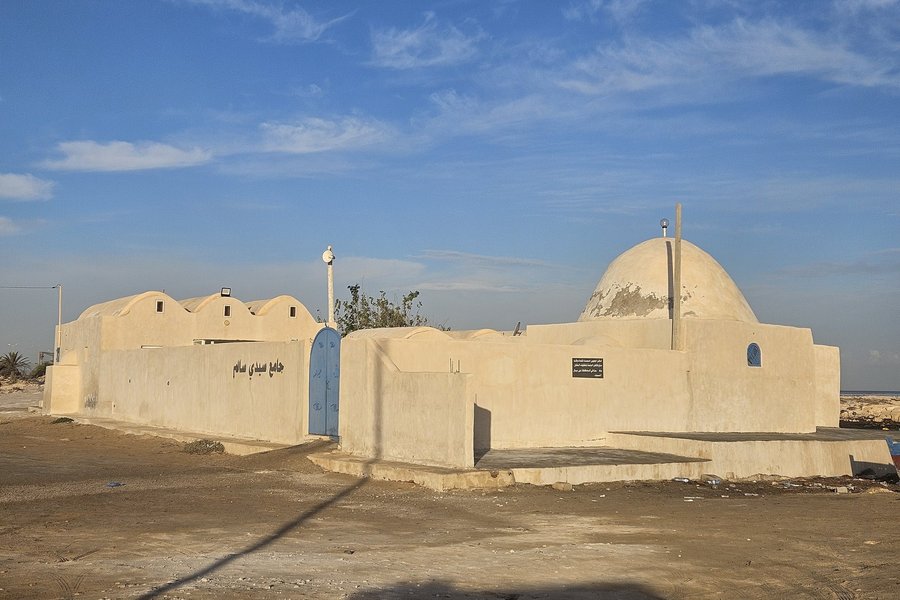
I visited Djerba for holidays in February of 2009. I was very surprised now when I saw that it was to be nominated as a WHS since I found the island neither very beautiful (it is totally flat) nor archeologically or architecturally interesting. I didn't even feel the need to take any pictures! We made a tour of the island and the most memorable place was the synagogue but even this didn't impress me much. More impressive was an excursion into the desert but naturally this was on the mainland. All in all it seemed very touristy and with few historic monuments. I doubt this has changed much since.
Keep reading 0 comments
